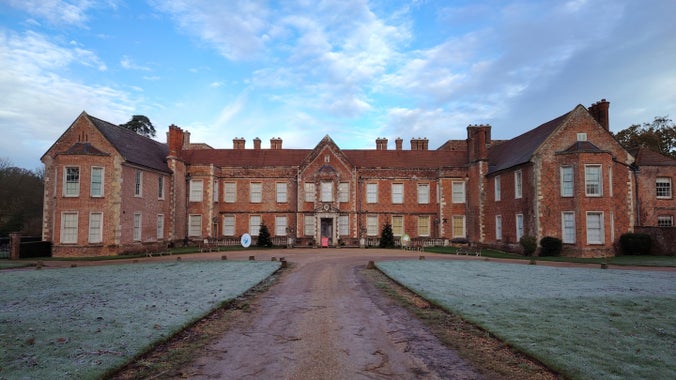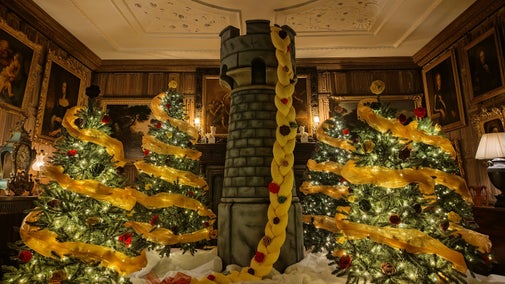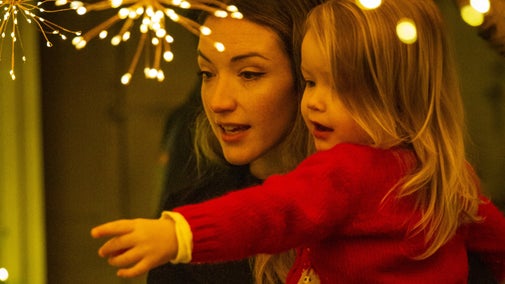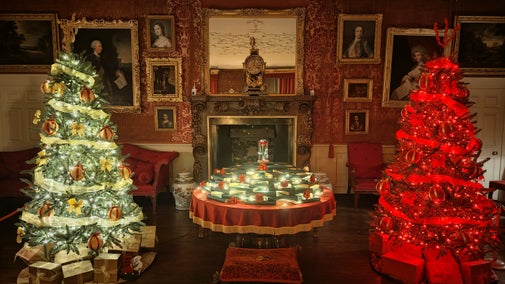
Become a member
Join today and help protect nature, beauty and history – for everyone, for ever. Enjoy access to more than 500 places with National Trust membership.
Explore a former Tudor powerhouse turned 17th-century family home, set in gardens, woodlands and wetlands.
Vyne Road, Sherborne St John, Basingstoke, Hampshire, RG24 9HL

𝐀 𝐅𝐚𝐢𝐫𝐲𝐭𝐚𝐥𝐞 𝐂𝐡𝐫𝐢𝐬𝐭𝐦𝐚𝐬 | 𝐔𝐧𝐭𝐢𝐥 𝟓 𝐉𝐚𝐧 | 𝐇𝐨𝐮𝐬𝐞 𝐨𝐩𝐞𝐧 𝟏𝟏𝐚𝐦-𝟑𝐩𝐦, 𝐠𝐚𝐫𝐝𝐞𝐧𝐬 𝟏𝟎𝐚𝐦-𝟒𝐩𝐦: Re-live the magic of best-loved fairy tales. On the ground floor of the house discover The Snow Queen’s icy realm, Red Riding Hood’s cunning wolf and Beauty and the Beast's elegant tea set. A free family trail runs in the house and gardens. 𝐂𝐨𝐥𝐥𝐞𝐜𝐭 𝐲𝐨𝐮𝐫 𝐡𝐨𝐮𝐬𝐞 𝐭𝐢𝐦𝐞𝐝 𝐭𝐢𝐜𝐤𝐞𝐭𝐬 𝐨𝐧 𝐚𝐫𝐫𝐢𝐯𝐚𝐥 𝐚𝐭 𝐕𝐢𝐬𝐢𝐭𝐨𝐫 𝐑𝐞𝐜𝐞𝐩𝐭𝐢𝐨𝐧. 𝐍𝐨 𝐩𝐫𝐞-𝐛𝐨𝐨𝐤𝐢𝐧𝐠, 𝐟𝐢𝐫𝐬𝐭-𝐜𝐨𝐦𝐞-𝐟𝐢𝐫𝐬𝐭-𝐬𝐞𝐫𝐯𝐞. Looking ahead to February half-term, don't miss the Pirate Puzzle Challenge in the gardens running 14-22 February, 10am-4pm. Browse all events here.

Until 5 Jan, 'A Fairytale Christmas at The Vyne' showcases sparkling trees and magical scenes on the ground floor of the house. Discover The Snow Queen’s icy realm, Red Riding Hood’s cunning wolf, Rapunzel's golden braid cascading from a her tower and enchanting decorations inspired by Beauty and the Beast. A free family trail runs in the house and gardens. House ground floor open 11am-3pm, gardens 10am-4pm. 𝐂𝐨𝐥𝐥𝐞𝐜𝐭 𝐲𝐨𝐮𝐫 𝐡𝐨𝐮𝐬𝐞 𝐭𝐢𝐦𝐞𝐝 𝐭𝐢𝐜𝐤𝐞𝐭𝐬 𝐨𝐧 𝐚𝐫𝐫𝐢𝐯𝐚𝐥 𝐚𝐭 𝐕𝐢𝐬𝐢𝐭𝐨𝐫 𝐑𝐞𝐜𝐞𝐩𝐭𝐢𝐨𝐧. 𝐍𝐨 𝐩𝐫𝐞-𝐛𝐨𝐨𝐤𝐢𝐧𝐠, 𝐟𝐢𝐫𝐬𝐭-𝐜𝐨𝐦𝐞-𝐟𝐢𝐫𝐬𝐭-𝐬𝐞𝐫𝐯𝐞. Looking ahead to February half-term, don't miss the Pirate Puzzle Challenge in the gardens running 14-22 February, 10am-4pm.

Until 5 January 11am-3pm, immerse yourselves in the magic of best-loved fairy tales. Explore the ground floor of the house aglow with sparkling Christmas trees and atmospheric lighting. There are eight stories to discover. Free with usual admission. Collect timed tickets for house on arrival - no pre-booking. The Sandys and Chute families made The Vyne their home for over 500 years. They accumulated beautiful and important objects and made significant changes to the house during their lives. Come back after Christmas to enjoy the collection in opulent state rooms and humble servants’ quarters. Read on for more information.

The Vyne is a three pawprint rated place. Find out about bringing your dog to The Vyne where you can explore the gardens together.

Nestled in the Hampshire countryside, The Vyne warmly welcomes groups of 15 or more people. We offer Bronze, Silver, and Gold packages and, exclusive to 2025, a special Jane Austen House Tour. Click through and scroll down to download a PDF of The Vyne's Group Booking Guide and to find out how to book your group visit.

Find your way around The Vyne's gardens and locate the house, shop and tea-room.

Join today and help protect nature, beauty and history – for everyone, for ever. Enjoy access to more than 500 places with National Trust membership.